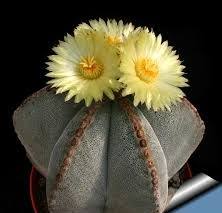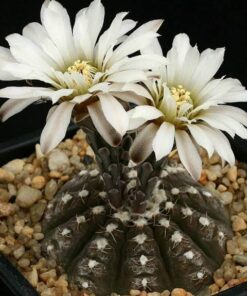Gymnocalycium Intertextum Cactus seeds pack of 20 seeds
₹199.00
In stock
SKU: GymnocalyciumIntertextum
Category: cactus and succulent seeds
Gymnocalycium Intertextum Care Guide
Gymnocalycium intertextum is a very beautiful and easy cactus which only demands little care. The green, round cactus has very few spines, which could be an extra beauty to any collection of cacti. The plant would be strong and healthy for generations if someone is giving proper conditions to the plant.
| Number of Seeds | 15-20 Seeds |
|---|---|
| Sowing month | Feb to Oct |
| Blooming Month | April To Dec |
| Temperature | Above 30C |
| Sun | Full sun except may june |
Light Requirements
This cactus tolerates bright, indirect light. It will thrive if it is placed in an east- or south-facing window. Outdoors, choose a position that gets morning sun and afternoon shade. It will burn in direct sunlight, so harden it off to bright light slowly.
Gymnocalycium Intertextum Watering
As with most cacti, Gymnocalycium intertextum will not need much watering. Water only when the soil has dried out completely. 1–2 weeks in spring and summer growing seasons. Monthly in winter months. Sparingly water or root rot will ensue. sansevieria boncel dwarf good partner of gymmo
Soil and Pot
It likes to sit in freely draining soil. Plant it in cactus or succulent potting mix. Mix regular potting mix, sand, and perlite and use them as a second drain. In pots, water thoroughly so there will be none.
Gymnocalycium Intertextum Temperature and Humidity
This cactus prefers 65–85°F (18–29°C) temperatures, warm ones. It will handle some cold but must be brought in out of frost. If you’re in a cold location, bring the plant inside for winter. Do not use high humidity, which leads to fungal problems.
Fertilizing
Frequent fertilizing of Gymnocalycium intertextum is not necessary. You can fertilize it in the growing season, though, with a weak cactus fertilizer once a month to encourage growth. Fertilize neither in winter nor in autumn when the plant is not growing.
Gymnocalycium Intertextum Repotting
Since the cactus develops slowly, repotting can only be conducted every 2–3 years. Transfer it to a slightly larger pot with drainage holes and new well-draining soil.
Common Problems
- Overwatering: Water excess leads to root rot. Always let the soil dry before watering.
- Sunburn: If cactus is yellowing or browning, it’s getting too much direct sunlight. Put it in the shade.
- Pests: Inspect for spider mites and mealybugs. Spray them with neem oil or insecticidal soap to kill them.
Conclusion
Gymnocalycium intertextum is a tough, beautiful cactus that is not demanding. As long as you give it plenty of light, regular watering, and good drainage, you will be left with a blooming, healthy plant to marvel over for years to come!
| Color | White |
|---|---|
| Germination Level | Easy |
| Growth Pattern | Up right Straight |
| Hybrid or Open Pollinated | Hybrid |
| Ideal location | Full sun |
| Origin Country | Thailand |
Be the first to review “Gymnocalycium Intertextum Cactus seeds pack of 20 seeds” Cancel reply
You must be logged in to post a review.
Related products
cactus and succulent seeds
Carnegiea gigantea (Saguaro) Seeds rare Cactus Seeds Pack of 20 seeds
₹199.00
cactus and succulent seeds
₹199.00
cactus and succulent seeds
Gymnocalycium mihanovichii seeds Variegated Seeds pack of 15-20 seeds
₹99.00
cactus and succulent seeds
₹249.00
cactus and succulent seeds
Astrophytum Asteria Superkabuto Seeds rare Cactus Seeds Pack of 10 seeds
₹199.00
cactus and succulent seeds
₹199.00












Reviews
There are no reviews yet.